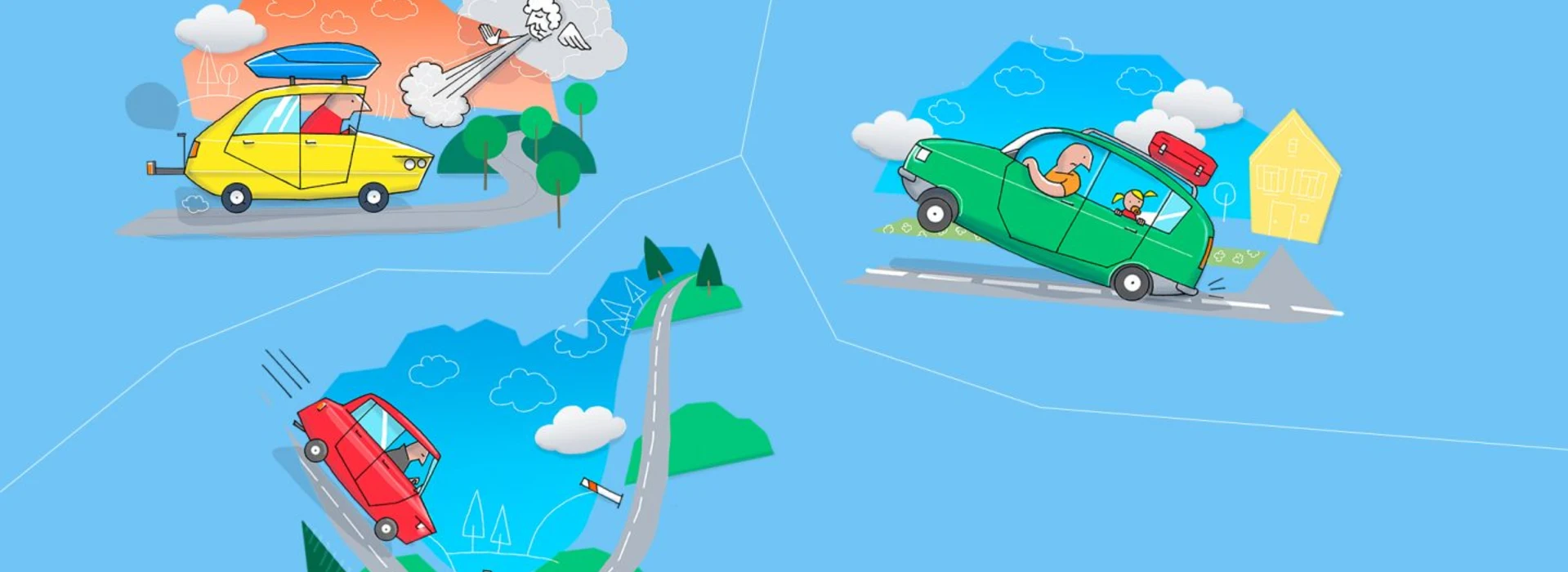Top 10 Tips to Save Fuel
Even as internal combustion engines are becoming ever more powerful, use of state-of-the-art technologies also means they require less fuel. Nevertheless, a lot depends upon how we drive. Careless driving may increase average fuel consumption by several litres, even though you do not substantially boost your average speed. You can save a lot on fuel by following these ten rules.
1. Reduce unnecessary weight
Every kilogram of a useless load increases fuel consumption, even if just a little. Make sure to always take out unused child seats and forgotten pieces of luggage. Even more importantly, remove bike/ski carriers (or the whole box) from the vehicle whenever you do not need them. Besides extra weight, these items substantially increase the aerodynamic resistance that affects the fuel consumption even more, to say nothing about the noise generated by such objects.
2. Do not deactivate the Start-Stop system
Start-Stop has a positive effect on fuel consumption. Škoda engines are prepared and designed to ensure that frequent starts do not affect their lifespan.
Bonus tip: when you have to stop and wait for a longer time, for example at a railway crossing, switching the engine off completely (whether with the on/off button or using the key) may pay off, because otherwise the Start-Stop system will start the engine automatically in a few minutes. The reason is that after a few minutes of inactivity the car runs out of the energy used for the various in-car devices and onboard systems.
3. Set out right away rather than warming up your car
Do not warm the engine up on idle, because in this mode the engine warms up slowly, as it is not required to generate any other power output than that sufficient for self-propulsion and its temperature therefore increases very slowly. It is much better to set out for the trip right away and do the first few miles with a light foot. Only a properly warm engine achieves optimum fuel consumption levels, and this way you will not only safe fuel but also increase the engine’s lifespan.
4. Drive at consistent speeds
Traffic permitting, drive at consistent speeds without accelerating and decelerating excessively. Braking involves major losses of energy that the engine had to use to reach the instantaneous speed. Driving at stable speeds enables the engine to operate in its optimum mode – moreover, some Škoda engines are fitted with ACT, a system designed to deactivate two of the four cylinders to further reduce fuel consumption.
5. Check your tyres
If you are getting ready for a holiday trip and your plan is to load the car well above its usual average, you had better inflate the tyres for maximum load – the required-pressure data are usually provided on a label placed on the inside of the fuel filler neck lid. If you fail to do this, the TPM (Tyre Pressure Monitoring system) will not indicate any pressure loss, but mainly your rear tyres are likely to be actually underinflated. Besides fuel consumption, this aspect has a negative effect on the car’s stability in motion… and therefore safety.
6. Choose the correct cruising speed
Bear in mind that at speeds above 100 km/h increasing the speed by even just 5 km/h may increase the instantaneous fuel consumption by one to two litres. Watch the onboard computer to choose the optimum cruising speed in terms of the fuel consumption/driving time ratio.
7. If possible, reduce the amount you stop
Every start involves high energy losses. If possible, try to keep a reasonable distance from the car ahead even in stop-and-go traffic, so you do not need to stop at all; moving ahead at walking speed is still better than “copying” every acceleration and deceleration of the car ahead of you. The same applies to approaches to traffic lights – benefits include not only reduced consumption, but also smoother traffic.
8. Be aware of energy eaters
With the AC switched on, your fuel consumption increases by as much as 1 l/100 km, particularly in vehicles fitted with manual or semiautomatic AC systems; automatic air conditioning systems are more energy-efficient. On the other hand, substituting the air conditioning by opening the windows is not smart, either, because open windows substantially increase the car’s aerodynamic resistance and therefore its fuel consumption. Besides air conditioning, you should also use the seat, window and mirror heating reasonably, as these are also energy “eaters”.
9. Use cruise control correctly
Cruise control is a useful tool that may help you reduce your fuel consumption substantially by stabilising your speed. Yet you’d better rely on your right foot in hilly landscapes with frequent ascents and descents, because pushing some more gas in and therefore moderately accelerating when going downhill will give your car enough inertia for the upcoming uphill stretch. In contrast, the cruise control tends to brake the vehicle when going downhill, and then, to maintain the same average speed, the engine load increases and the fuel consumption goes up, too.
10. Use the gear-change advisor
Applies to manual-gearbox cars. Every Škoda vehicle is fitted with a gear-change advisor, and you will benefit by using it. The system is designed to help you always use the best gear and avoid over-revving or under-revving the engine. Modern engines provide enough power even at surprisingly low revolutions. You may have noticed that when the car cruises while you basically don’t press the accelerator pedal, the advisor prompts you to gear up; as soon as you press the pedal, the upwards arrow disappears – this is because gearing up is no more the best way of meeting the need for higher output.
